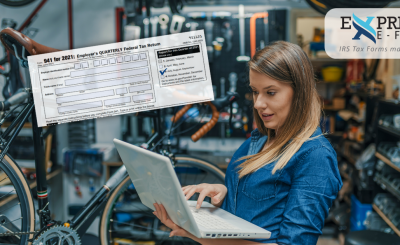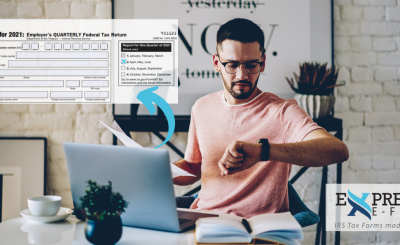Employers will be filing a newly updated From 941 for the first time when they meet their second-quarter deadline. Find out about IRS Form 941 changes for COVID-19 tax relief.
IRS Form 941 went up a size during COVID-19 and it wasn’t because of quarantine snacking! In response to the economic hardship surrounding the pandemic, the IRS and the U.S. government have issued provisions to help individuals and businesses. With all of these programs in place, Form 941 has expanded from 2 to 4 pages and includes Worksheet 1 to reflect the FFCRA and the CARES Act.
COVID-19 tax relief offered by FFCRA
The Families First Coronavirus Response Act (FFCRA) requires some employers to give their employees extra sick and family leave wages if they have certain needs.
Eligible employers are required to give their employees two weeks of COVID-19 paid sick leave under the FFCRA. Employees can use this leave if they have contracted COVID-19 or have symptoms of the virus and are awaiting a diagnosis. They are also eligible if they can’t work because they’ve been quarantined, either by a doctor or under state or federal law.
The FFCRA also offers two weeks of paid sick leave at two-thirds of the employee’s usual wages in certain circumstances. If an employee can’t work because they’re caring for a quarantined family member, caring for a child who is out of school, or experiencing symptoms that are similar to COVID-19, they can receive this paid time off.
Employers who meet these criteria will be completely reimbursed for all qualified wages they pay employees under the FFCRA, but they will need to report them to the IRS. This is where the newly updated Form 941 comes in.
COVID-19 tax relief offered by the CARES-Act
The CARES Act is a new law that has contributed to the 23 new data-entry fields on Form 941. The CARES-Act provides Employee Retention Credit to employers who have faced financial strain during COVID-19 but have still prioritized keeping their employees on payroll. These employers get 50% of eligible employee’s qualified wages back in refundable tax credits.
Whether you’re requesting an advance on these tax credits with Form 7200, using them against the Social Security portion of employment taxes, or reporting qualified wages to receive tax credit, there is a lot of new information to record on Form 941.
Find out more about Employee Retention Credit and how it could help your business and get prepared for your second-quarter Form 941 deadline. For a complete rundown on the newly updated IRS Form 941, visit this blog.
ExpressE-file is here to keep you up to date on the latest tax news and provide cutting edge e-filing software. For assistance, contact our 100% U.S. based customer support team, and when it’s time to file the expanded Form 941, we have the best fit for you.





